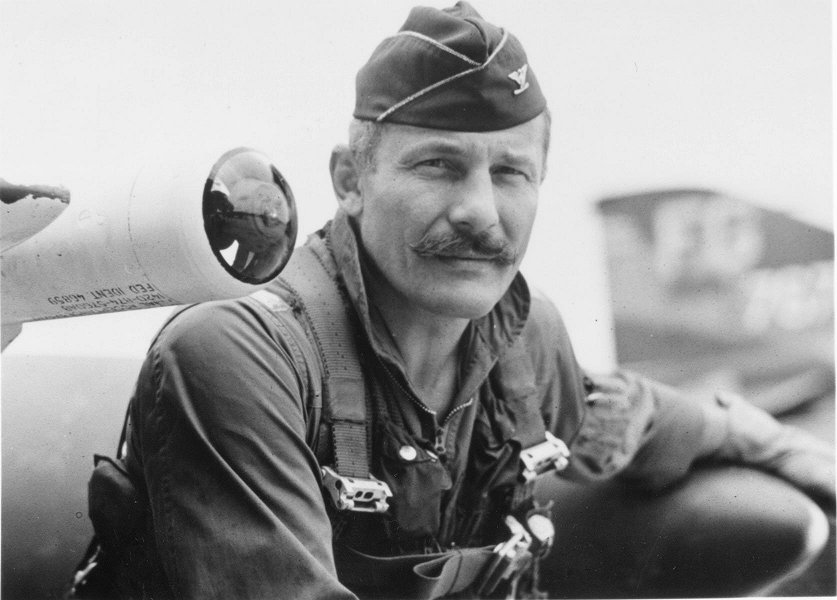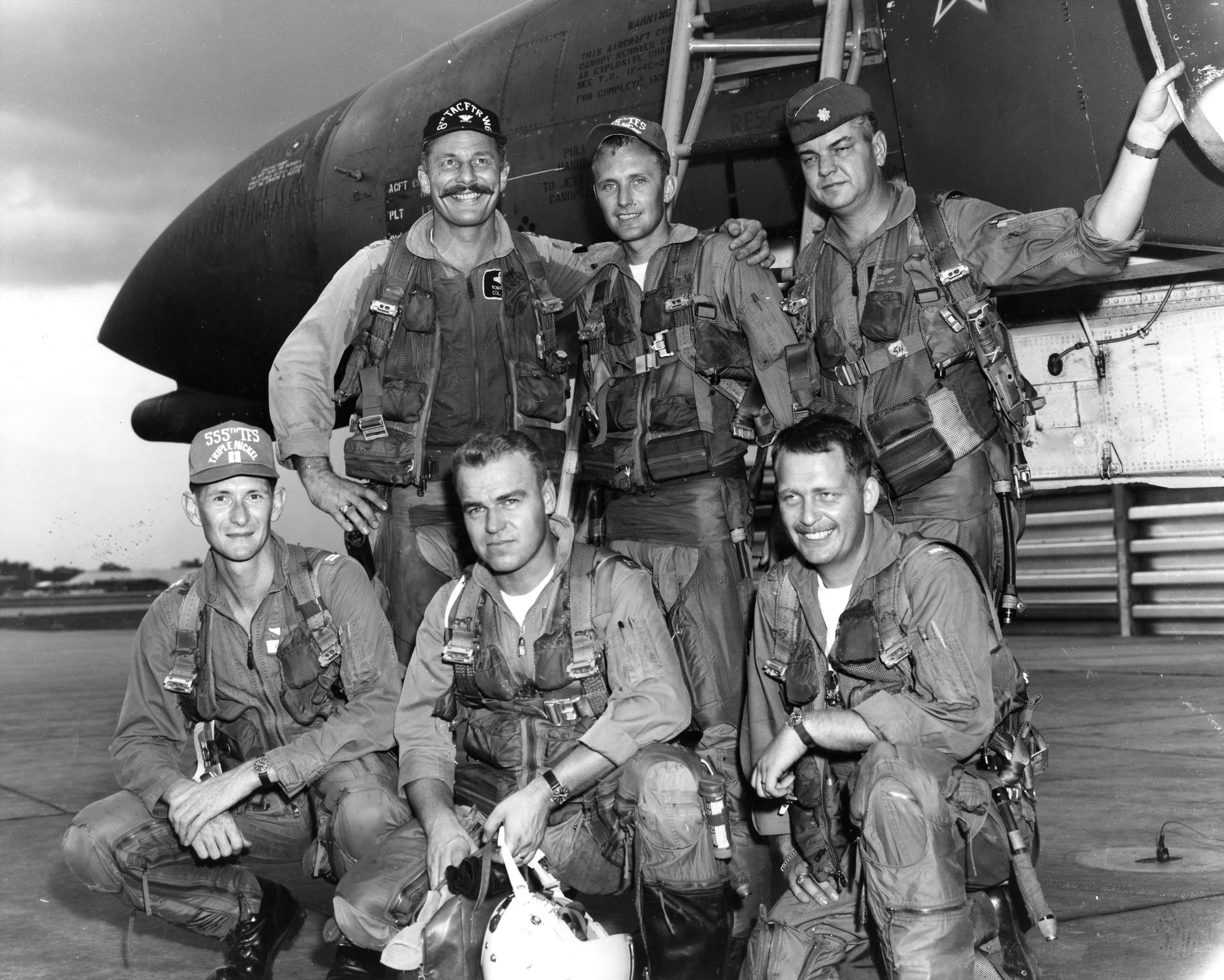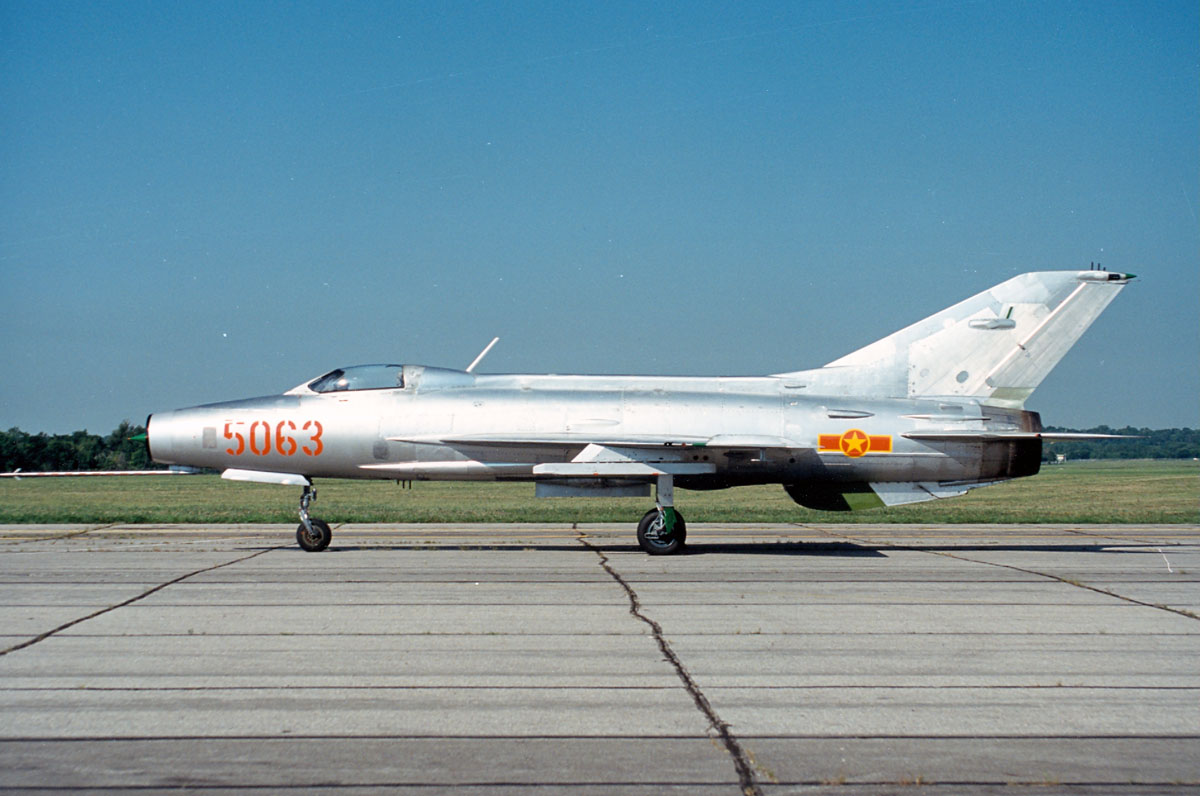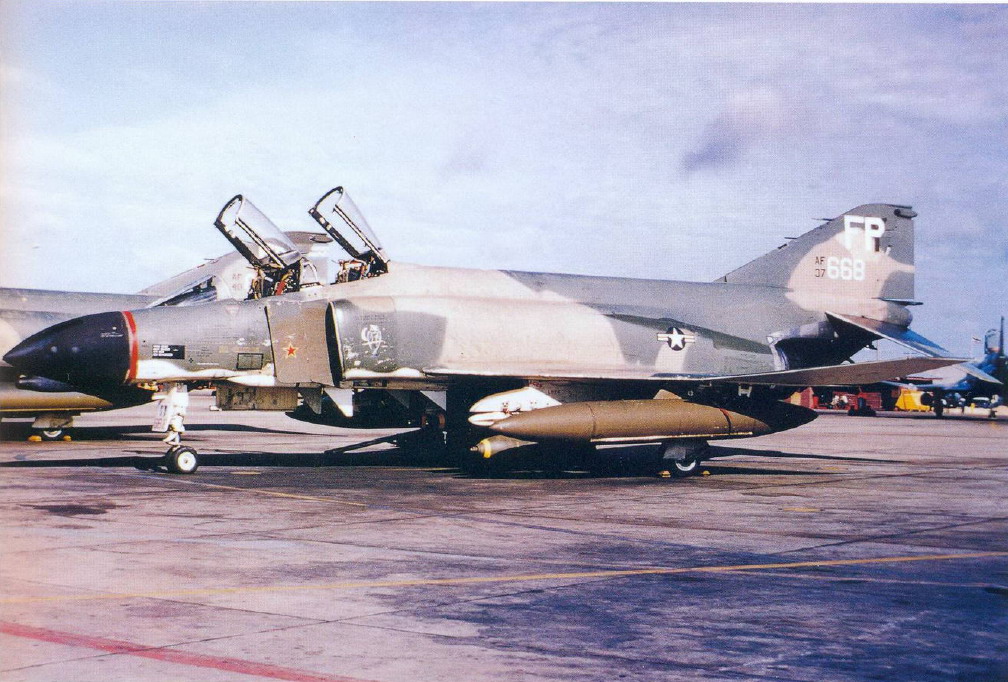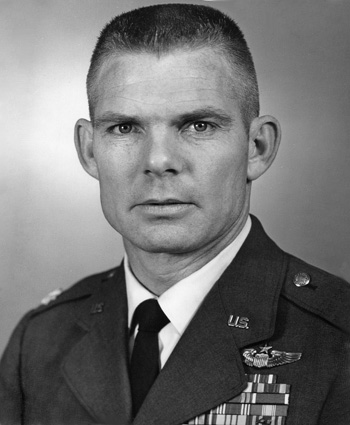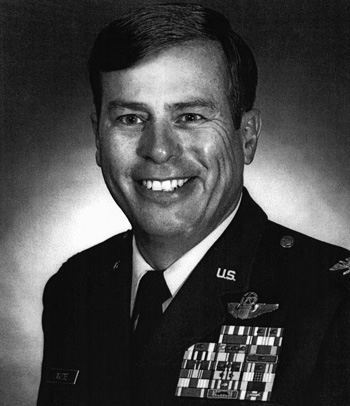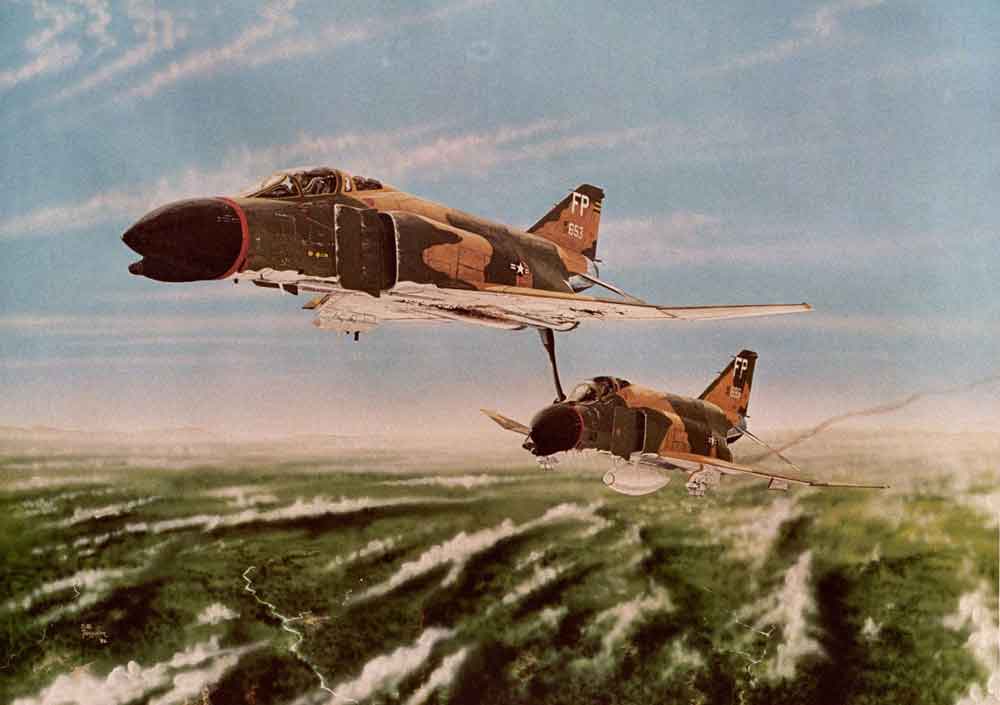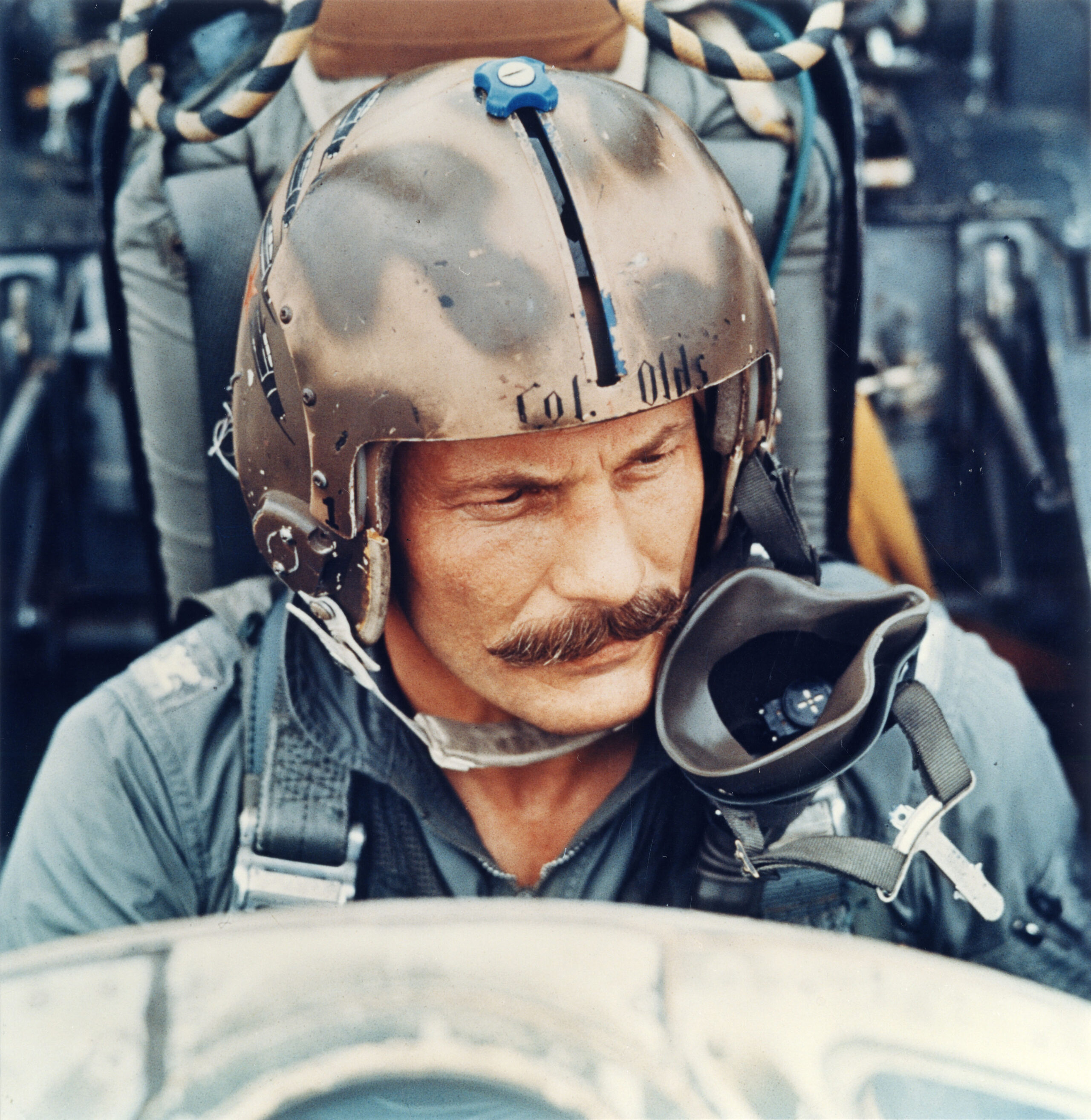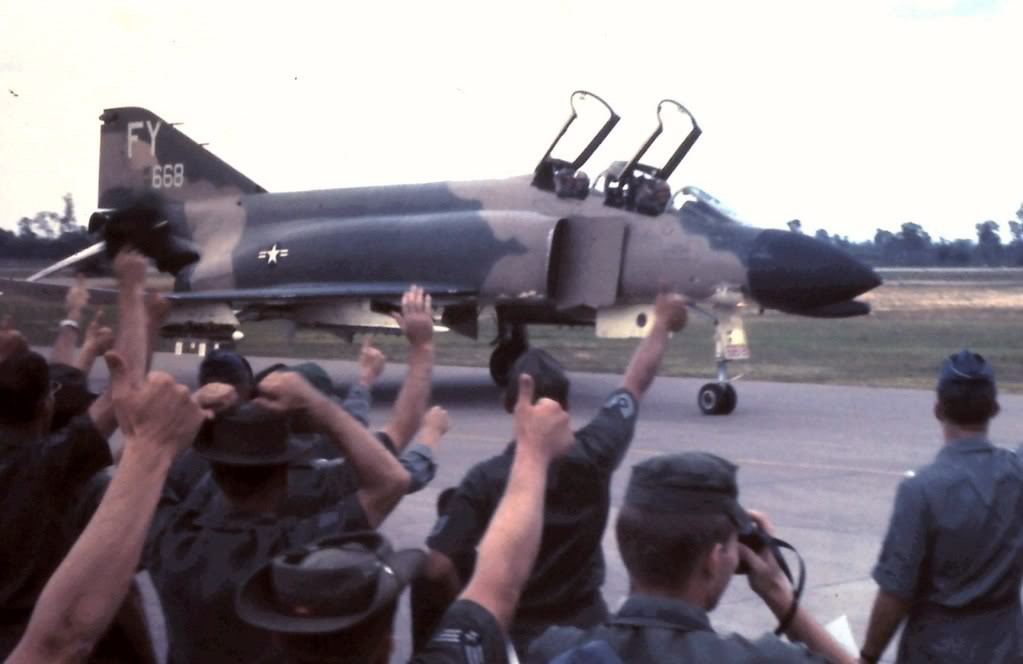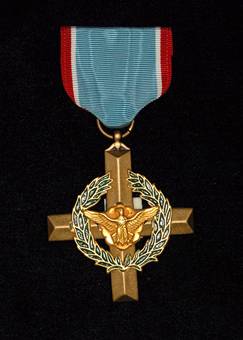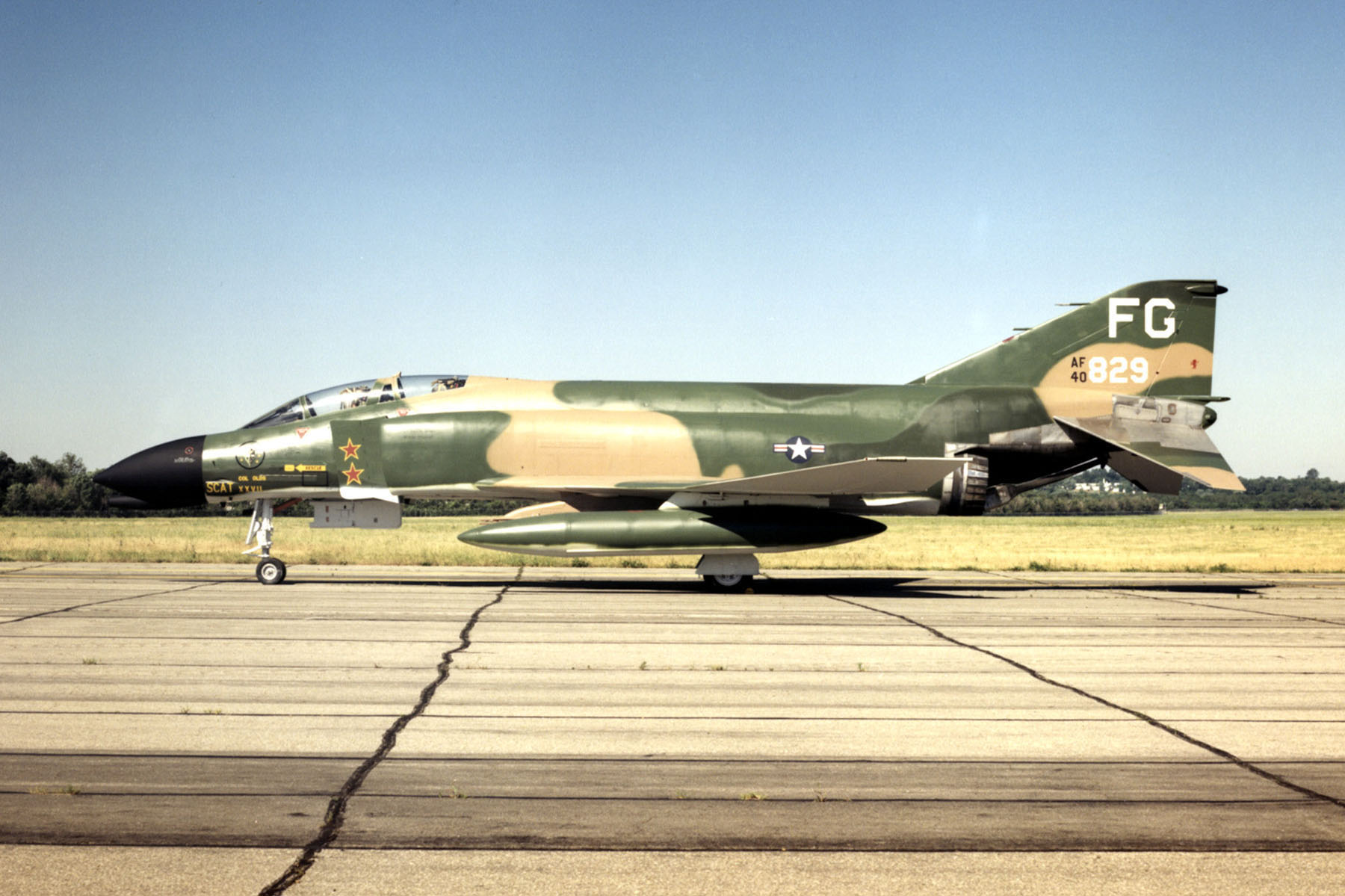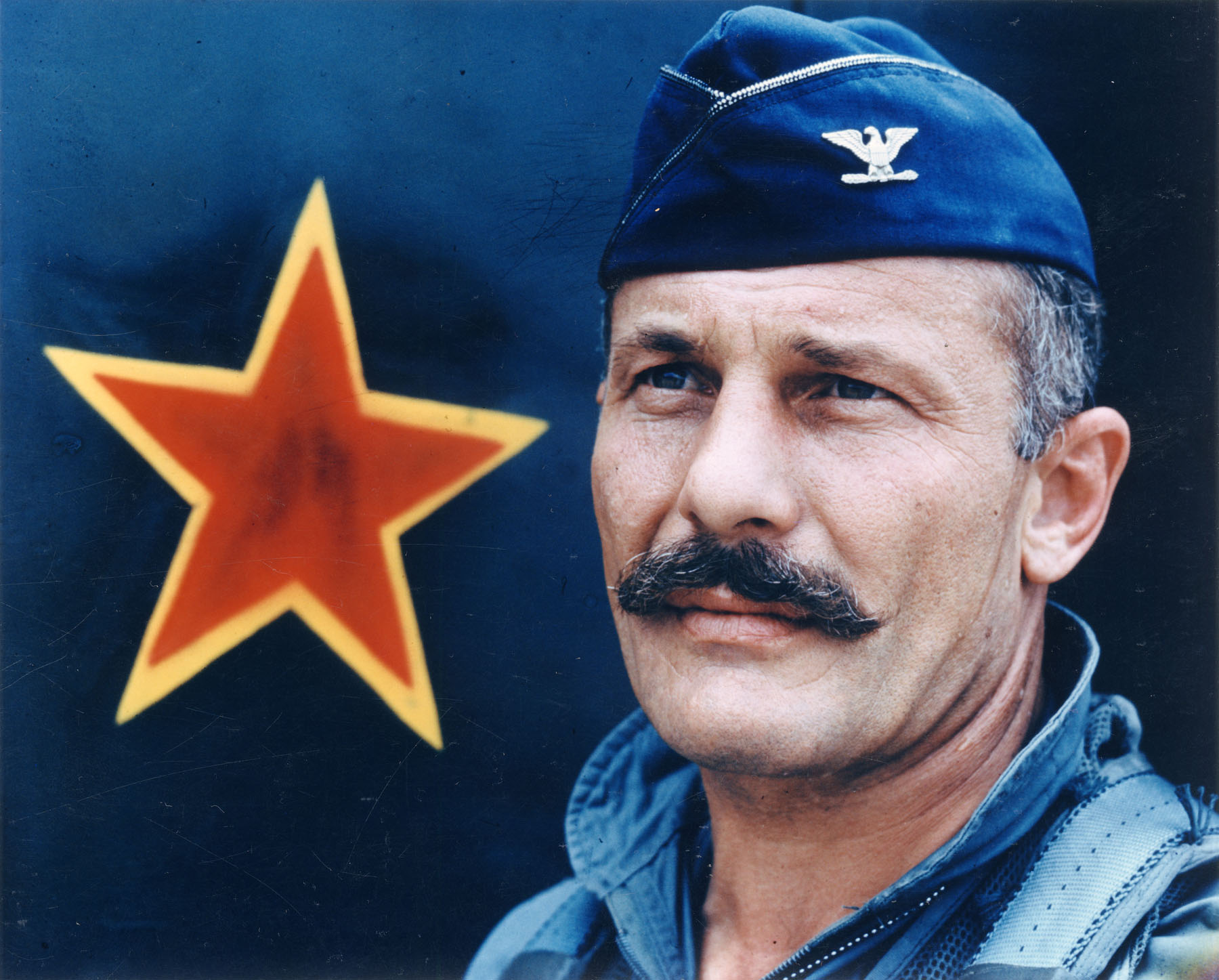
20 May 1967: Colonel Robin Olds, USAF, commanding officer of the 8th Tactical Fighter Wing based at Ubon Rachitani Royal Thai Air Force Base, and Weapons System Officer 1st Lieutenant Stephen B. Croker, destroyed two Vietnam People’s Air Force MiG-17 fighters with AIM-7 Sparrow radar-guided and AIM-9 Sidewinder heat-seeking air-to-air missiles while flying McDonnell F-4C-24-MC Phantom II, serial number 64-0829, named SCAT XXVII.
An official U.S. Air Force history publication describes the air battle:
Two other MiG-17s became the victims of Col. Robin Olds and his pilot, 1st. Lt. Stephen B. Croker. [Note: at this point in time, the WSOs of USAF F-4Cs were fully-rated pilots.—TDiA] These were aerial victories three and four for Olds, making him the leading MiG-killer at that time in Southeast Asia. An ace from World War II, the 8th TFW commander was battle-tested and experienced. Olds termed the events of 20 May “quite a remarkable air battle.” According to his account:
F-105s were bombing along the northeast railroad; we were in escort position, coming in from the Gulf of Tonkin. We just cleared the last of the low hills lying north of Haiphong, in an east-west direction, when about 10 or 12 MiG-17s came in low from the left and, I believe, from the right. They tried to attack the F-105s before they got to the target.
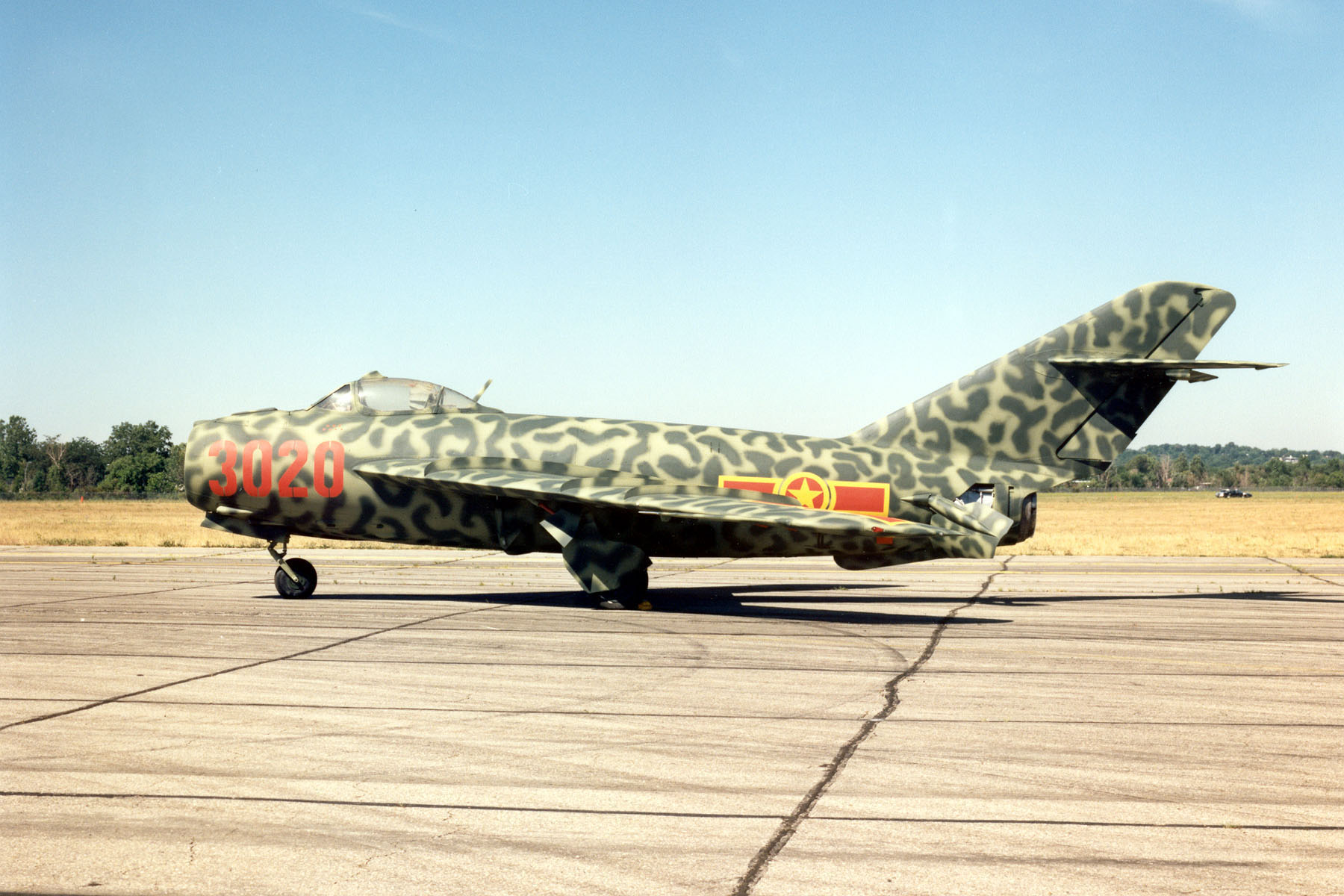
We engaged MiG-17s at approximately 15 miles short of the target. The ensuing battle was an exact replica of the dogfights in World War II.
Our flights of F-4s piled into the MiGs like a sledge hammer, and for about a minute and a half or two minutes that was the most confused, vicious dogfight I have ever been in. There were eight F-4Cs, twelve MiG-17s, and one odd flight of F-105s on their way out from the target, who flashed through the battle area.
Quite frankly, there was not only danger from the guns of the MiGs, but the ever-present danger of a collision to contend with. We went round and round that day with the battles lasting 12 to 14 minutes, which is a long time. This particular day we found that the MiGs went into a defensive battle down low, about 500 to 1,000 feet. In the middle of this circle, there were two or three MiGs circling about a hundred feet—sort of in figure-eight patterns. The MiGs were in small groups of two, three, and sometimes four in a very wide circle. Each time we went in to engage one of these groups, a group from the opposite side would go full power, pull across the circle, and be in firing position on our tails almost before we could get into firing position with our missiles. This was very distressing, to say the least.
The first MiG I lined up was in a gentle left turn, range about 7,000 feet. My pilot achieved a boresight lock-on, went full system, narrow gate, interlocks in. One of the two Sparrows fired in ripple guided true and exploded near the MiG. My pilot saw the MiG erupt in flame and go down to the left.
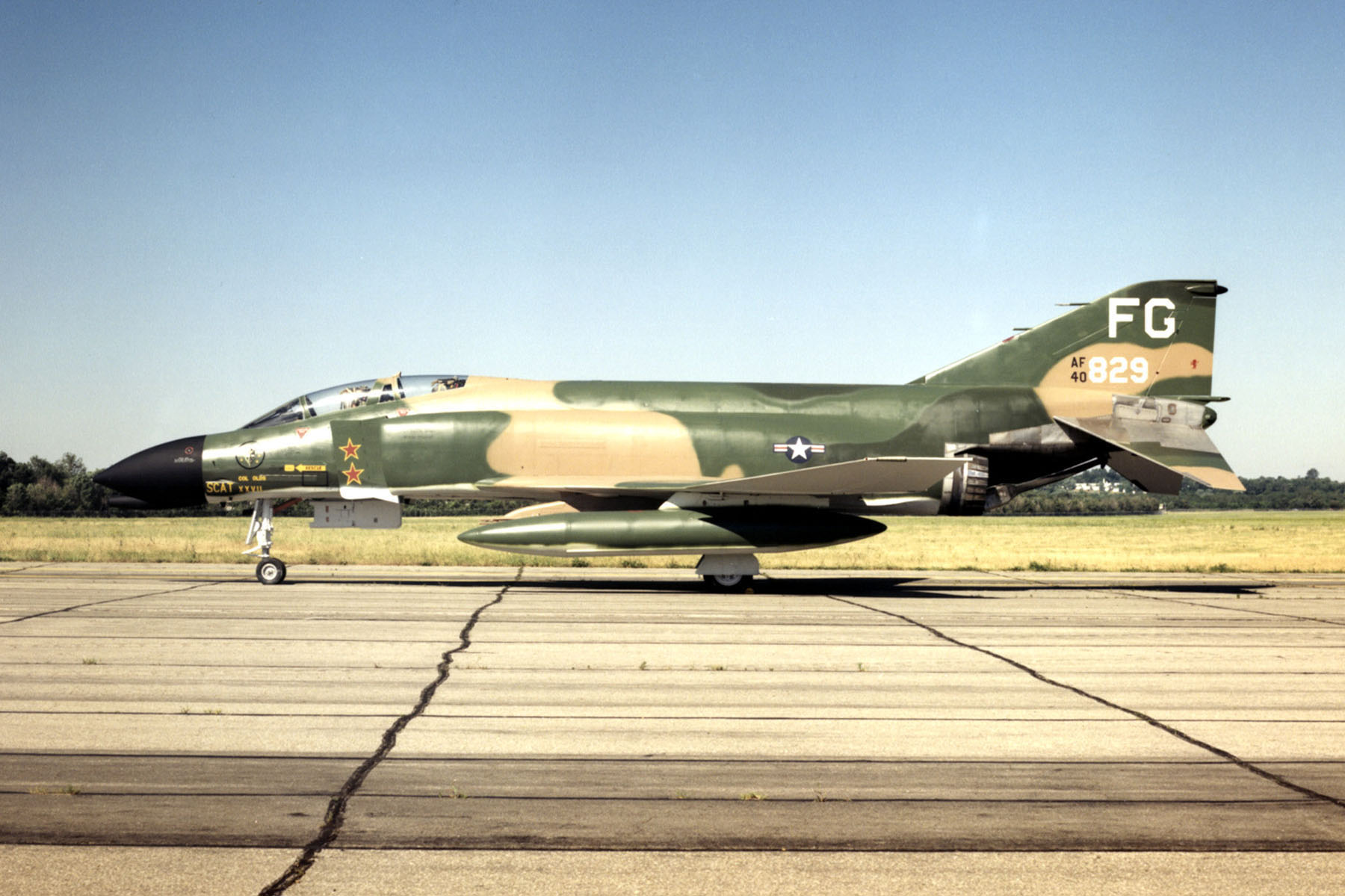
We attacked again, trying to break up that defensive wheel. Finally, once again, fuel considerations necessitated departure. As I left the area by myself, I saw that lone MiG still circling and so I ran out about ten miles and said that even if I ran out of fuel, he is going to know he was in a fight. I got down on the deck, about 50 feet, and headed right for him. I don’t think he saw me for quite a while. But when he did, he went mad, twisting, turning, dodging and trying to get away. I kept my speed down so I wouldn’t overrun him and I stayed behind him. I knew he was either going to hit that ridge up ahead or pop over the ridge to save himself. The minute he popped over I was going to get him with a Sidewinder.
I fired one AIM-9 which did not track and the MiG pulled up over the ridge, turned left and gave me a dead astern shot. I obtained a good growl. I fired from about 25 to 50 feet off the grass and he was clear of the ridge by only another 50 to 100 feet when the Sidewinder caught him.
The missile tracked and exploded 5 to 10 feet to the right side of the aft fuselage. The MiG spewed pieces and broke hard left and down from about 200 feet. I overshot and lost sight of him.
I was quite out of fuel and all out of missiles and pretty deep in enemy territory all by myself, so it was high time to leave. We learned quite a bit from this fight. We learned you don’t pile into these fellows with eight airplanes all at once. You are only a detriment to yourself.
— Aces and Aerial Victories: The United States Air Force in Southeast Asia 1965–1973, by R. Frank Futrell, William H. Greenhalgh, Carl Grubb, Gerard E. Hasselwander, Robert F. Jakob and Charles A. Ravenstein, Office of Air Force History, Headquarters USAF, 1976, Chapter II at Pages 59–60.
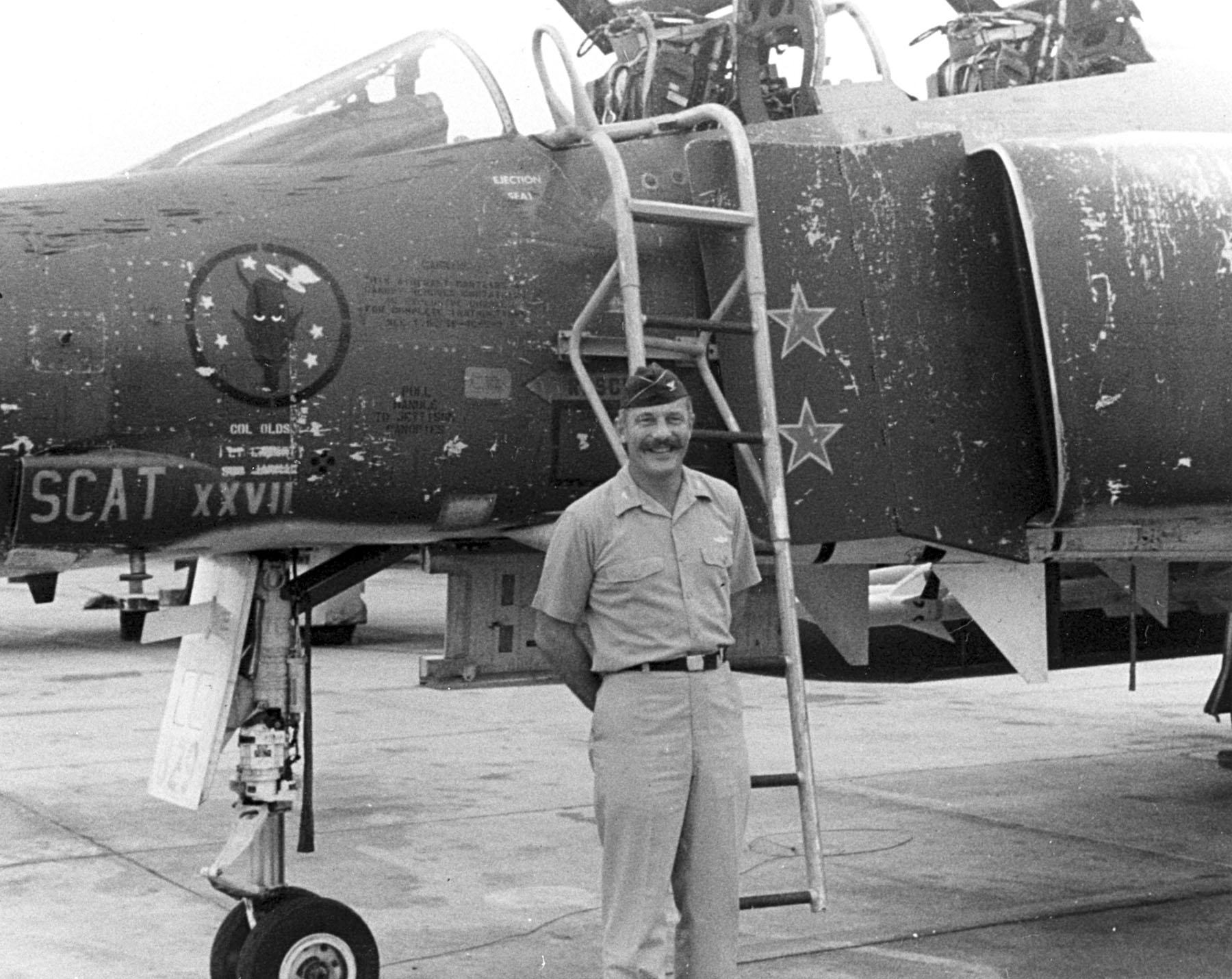
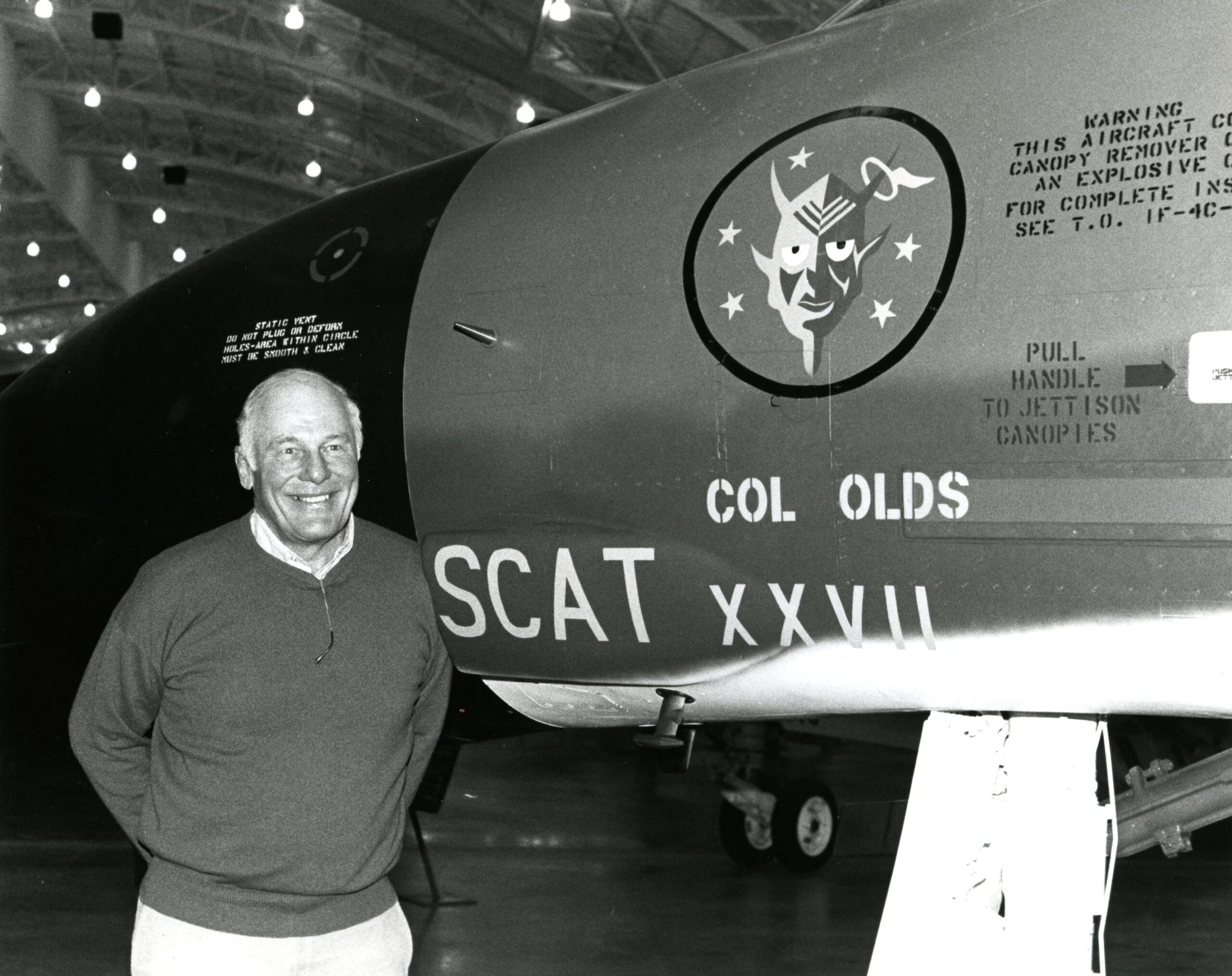
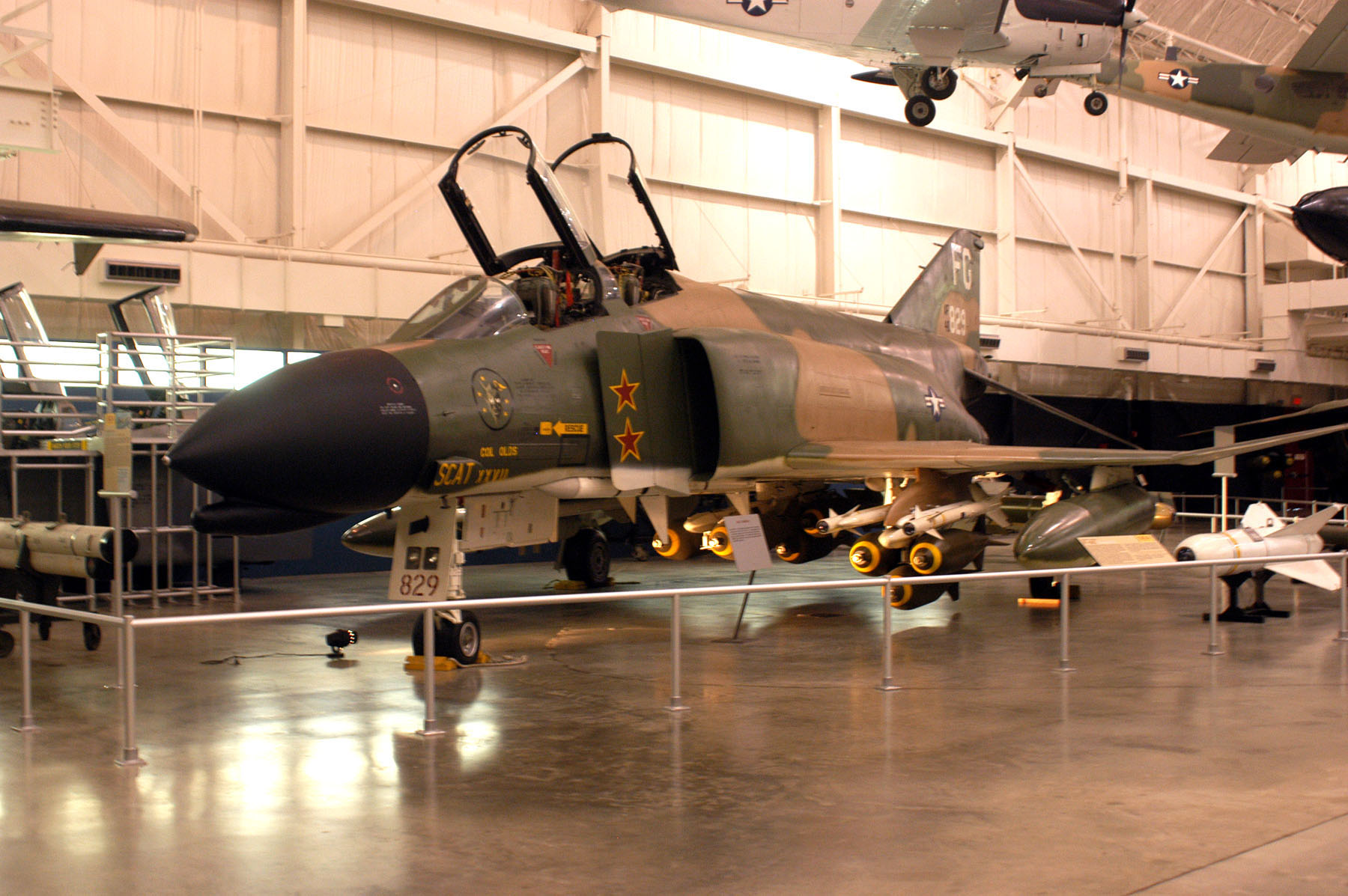
© 2016, Bryan R. Swopes
